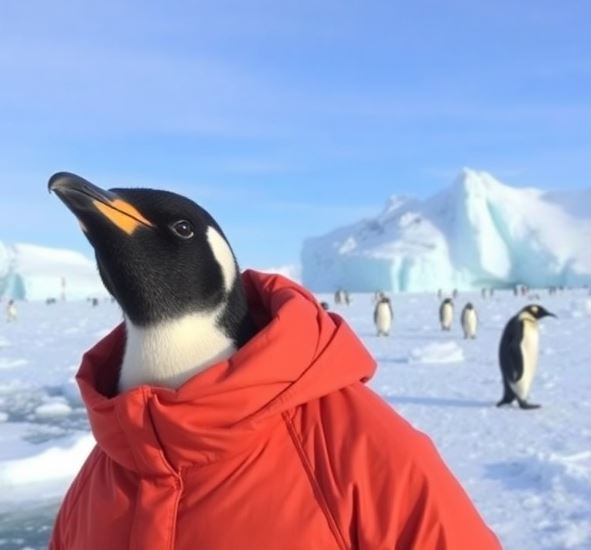
Picture this: you’re gliding through icy waters on a small expedition ship, surrounded by towering icebergs that shimmer in the polar light. Penguins waddle across snow-dusted shores, seals lounge on drifting floes, and a humpback whale breaches just metres away. This isn’t a dream—it’s an Antarctica cruise, a journey to the edge of the world that’s skyrocketing in popularity among adventure travellers. Once the domain of scientists and explorers, the White Continent has morphed into a bucket-list must-do, blending raw wilderness with a dash of luxury. What’s driving this trend? A thirst for unique experiences, a craving for nature’s last frontier, and a fleet of innovative ships making it more accessible than ever. This article uncovers why Antarctica cruises are trending, diving into their allure, logistics, and impact. From the Drake Passage to penguin rookeries, here’s why the frozen south is calling—and why travellers are answering.
The White Continent’s Magnetic Pull
Antarctica isn’t your average holiday spot. It’s the coldest, driest, windiest continent—a place with no permanent residents, no cities, just 14 million square kilometres of ice and rock. Yet, its stark beauty and untouched wildness have turned it into a siren song for those seeking something extraordinary.
A Bucket-List Benchmark
For adventure travellers, Antarctica ticks every box: remote, rugged, and rich with wildlife. It’s the ultimate “been there, done that” brag—fewer than 100,000 people visit annually, a fraction of the millions hitting Paris or New York. The UNWTO notes that global adventure tourism is growing at 17% per year, and Antarctica cruises are riding that wave. Operators like HX Hurtigruten Expeditions report bookings stretching years ahead, with demand spiking for trips that promise both thrill and exclusivity.
Why now? Social media plays a role—stunning shots of ice cliffs and penguin colonies flood Instagram, fuelling FOMO. But it’s deeper than likes. In a world of over-touristed hotspots, Antarctica offers rarity—a chance to stand where few have, to witness nature unscripted.
The Adventure Factor
This isn’t a passive trip. Cruises to Antarctica are expeditions, not lounging-by-the-pool affairs. Passengers kayak past glaciers, snowshoe across frozen plains, or camp under a sky that never fully darkens in summer. The HX Hurtigruten Expeditions site highlights activities like these, noting that their smaller ships—capping at 500 guests—maximize shore time. It’s hands-on, heart-pumping, and utterly unique, appealing to a breed of traveller who’d rather paddle a Zodiac than sip a piña colada.
- Rarity: Fewer than 100,000 annual visitors vs. millions elsewhere.
- Growth: Adventure tourism up 17% yearly, Antarctica in tow.
- Action: Kayaking, snowshoeing, camping—not your typical cruise.
Cruising the Frozen Frontier: How It Works
Getting to Antarctica isn’t a hop on a plane—it’s a mission. Most cruises depart from Ushuaia, Argentina, or Punta Arenas, Chile, crossing the infamous Drake Passage or flying to skip it. The logistics alone make it an adventure.
The Drake Passage: A Rite of Passage
The Drake Passage, a 600-mile stretch between South America and Antarctica, is legendary for its wild seas—waves can hit 10 metres, testing even seasoned sailors. Ships like Quark Expeditions’ Ultramarine brace for it, offering stabilizers and expert crews to ease the ride. It takes two days each way, a bumpy baptism that’s become a badge of honour. “You earn Antarctica,” says one veteran cruiser on forums—half the thrill is surviving the “Drake Shake” to reach the calm beyond.
For the less hardy, fly-cruise options from Punta Arenas soar over the passage to King George Island, cutting travel time to hours. Antarctica21 pioneered this, blending a quick flight with a ship-based exploration. It’s pricier—starting at $10,000 vs. $5,000 for a classic cruise—but it’s a game-changer for time-crunched adventurers.
The Ships: Small and Nimble
Forget mega-cruisers. Antarctica’s strict environmental rules, enforced by the International Association of Antarctica Tour Operators (IAATO), cap landings at 100 passengers at a time—ships over 500 can’t disembark at all. Operators like Aurora Expeditions use vessels like the Greg Mortimer, with 172 guests, to weave through ice floes and drop Zodiacs for close-up encounters. Luxury options—Silversea’s Silver Cloud, with suites and fine dining—prove you can rough it in style.
- Drake: Two days of wild seas—or a quick flight to skip it.
- Fly-Cruise: Faster, costlier, but just as epic.
- Ships: Small (under 500) for landings, luxe for comfort.
Wildlife and Wonders: What You’ll See
Antarctica’s draw isn’t just the journey—it’s the payoff. The continent teems with life and landscapes that defy imagination, making every cruise a front-row seat to nature’s grandest show.
Penguins, Whales, and Seals, Oh My!
The summer season (November to March) is prime time—penguins breed, whales feed, and seals bask. The Antarctic Peninsula, a hotspot for cruises, hosts millions of Adélie, chinstrap, and gentoo penguins, their rookeries a cacophony of squawks and waddles. Humpback and minke whales breach in nutrient-rich waters, while leopard seals prowl ice edges. A National Geographic guide notes that South Georgia, often paired with Peninsula trips, boasts the world’s largest king penguin colonies—hundreds of thousands strong.
Ice and Sky: Nature’s Masterpieces
The scenery is unreal—icebergs sculpted into surreal shapes, glaciers calving with thunderous cracks, and a sky that glows 24 hours in midsummer. Paradise Bay and Lemaire Channel, dubbed “Kodak Alley,” are cruise staples, their mirror-like waters reflecting peaks. Cross the Antarctic Circle (66°33’S), a feat on longer itineraries, and you’re in the realm of the midnight sun—pure bucket-list gold.
Case Study: A Photographer’s Paradise
Take Emma, a 35-year-old photographer from Sydney who joined a 12-day HX cruise. “I’d shot landscapes before, but this was next-level,” she says. Kayaking near Port Lockroy, she captured a pod of orcas slicing through ice-strewn waters. “The light never stopped—golden hour lasted all day.” Her trip, costing $8,000, included Zodiac landings where she framed penguins against glacial backdrops. “It’s not just pretty—it’s primal,” she adds, echoing why adventure travellers rave about the visuals.
Trends and Travellers: Who’s Going and Why
Antarctica cruises aren’t a passing fad—they’re a movement, shaped by shifting travel tastes and a new breed of explorer.
The Adventure Crowd
Today’s travellers aren’t content with sunbathing—they want stories. G Adventures reports a 30% rise in bookings for its Antarctic trips, with 60% aged 30–50, defying the retiree stereotype. Solo travellers, too, are surging—Quark Expeditions offers no single supplement on select cabins, tapping into this growing niche. These aren’t just tourists; they’re experience hunters, drawn by the chance to kayak with whales or sleep on ice.
Case Study: The Family Expedition
The Wilsons, a family of four from California, took a 14-day Lindblad Expeditions cruise with their teens. “We wanted them off screens, into something real,” says dad Mike. They snowshoed near Neko Harbour and watched penguins hatch—$25,000 well spent, he says. “The kids still talk about the whale that surfaced by our Zodiac.” For families, it’s education meets adventure, a trend operators are leaning into with kid-friendly programs.
The Bigger Picture: Impact and Future
The boom isn’t without ripples—economic wins jostle with environmental stakes, shaping how Antarctica cruises evolve.
Economic Boost
Tourism pumps millions into gateway cities like Ushuaia, where hotels, guides, and outfitters thrive. In Antarctica, every passenger pays a conservation fee via IAATO, funding research and protection. The World Bank highlights tourism’s 10% slice of Argentina’s GDP—Antarctica’s share is small but growing.
Climate Concerns
Here’s the catch: Antarctica’s ice is melting—fast. Cruises aim for sustainability—HX’s hybrid ships cut emissions, and IAATO limits landings—but each voyage leaves a carbon footprint. Scientists warn that rising tourism could stress wildlife, yet it also funds studies via onboard programs. It’s a tightrope: adventure vs. preservation.
Why It’s Trending Now
Antarctica cruises are hot because they’re rare, raw, and reachable. Small ships and fly-cruises shrink the barriers, while Instagram amplifies the hype. Post-pandemic, travellers crave big, bold trips—Antarctica delivers.
- Exclusivity: Limited access keeps it special.
- Access: More ships, flights make it doable.
- Zeitgeist: Post-COVID hunger for epic escapes.
Conclusion: Antarctica’s Call Endures
Antarctica cruises have surged from niche to necessity on the adventure travel scene, blending bucket-list bravado with nature’s rawest spectacle. They’re not cheap or easy—$5,000 to $25,000, days of travel, the Drake’s wild ride—but that’s the point. From penguin-packed shores to ice-choked channels, they offer a visceral connection to a continent untouched by time. Travellers like Emma and the Wilsons prove it’s more than a trip—it’s a transformation, fuelled by wildlife, wonder, and a dash of daring. As ships get greener and demand soars, Antarctica’s allure holds firm: a frozen frontier where adventure reigns supreme, calling those bold enough to answer.



